Bienvenida Renata: Q&A con la nueva coordinadora de EVOM
Escrito por Maria Burciaga-Alaniz, ¡previamente la coordinadora de EVOM, ahora la coordinadora...
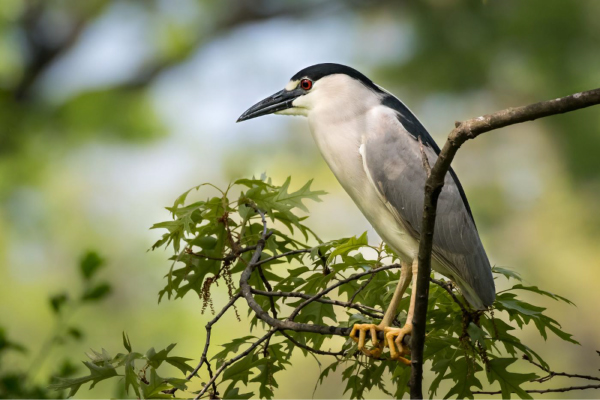
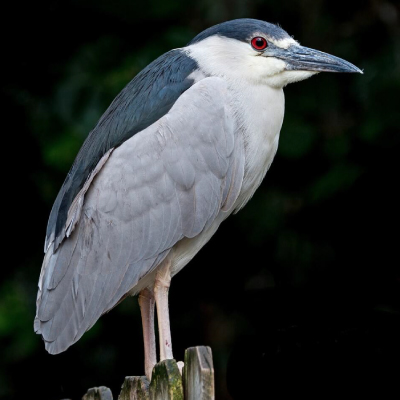 Cuando se les pide a las personas que imaginen la vida silvestre que llama hogar a las Montañas Rocosas, las aves costeras rara vez son lo primero que viene a la mente. Por lo tanto, no es de extrañar que algunos se sorprendan al saber que garzas, gaviotas, garcetas y muchas otras aves costeras se reproducirán en las montañas de Colorado.
Cuando se les pide a las personas que imaginen la vida silvestre que llama hogar a las Montañas Rocosas, las aves costeras rara vez son lo primero que viene a la mente. Por lo tanto, no es de extrañar que algunos se sorprendan al saber que garzas, gaviotas, garcetas y muchas otras aves costeras se reproducirán en las montañas de Colorado.
La presencia de estas aves costeras puede pasar desapercibida en ocasiones. Sin embargo, juegan un papel vital en la red alimentaria acuática de Colorado, al mismo tiempo que actúan como una prueba de fuego crítica de la calidad del agua. Entonces, si está atravesando el hermoso paisaje de Colorado y se encuentra con aves costeras, recuerde, el hecho de que esté presenciando estas aves significa sólo interacciones positivas para los cuerpos de agua circundantes. La mayoría de la gente recuerda a la garza azul mucho más grande cuando se le pregunta sobre la familia de las garzas. Sin embargo, la garza nocturna corona negra es la garza más común en todo el mundo. La garza nocturna es más corta y gruesa en comparación con la garza azul, esto a menudo se enfatiza demasiado debido al hecho de que con frecuencia descansan con el cuello hacia adentro. Se han ganado su nombre de “garza nocturna coronada de negro” por el color oscuro de la coronilla y por su plumaje.
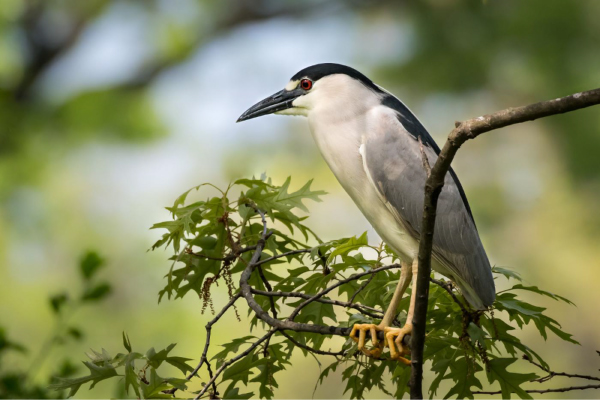
También fieles a su nombre, las Black Crown garzas nocturnas realizan la mayor parte de su alimentación al anochecer y continúan durante la noche. Como la mayoría de las otras garzas, las garzas nocturnas acechan a sus presas mientras vadean en aguas poco profundas. Si bien eligen principalmente alimentarse de peces, las garzas nocturnas también comen lombrices de tierra, insectos, mariscos, roedores y reptiles como lagartos y serpientes.
Las garzas nocturnas generalmente acechan solas o en grupos muy pequeños. Sin embargo, en realidad son pájaros muy sociales. Las garzas nocturnas anidan en colonias y, a menudo, se pueden ver anidando dentro de grupos de otras garzas, como la gran garza azul, la garza verde y la garza azul pequeña, y más. La garza nocturna macho elegirá el lugar de anidación, a menudo seleccionando un lugar dentro de los árboles, parches de espadaña o cualquier área que pueda ofrecer protección contra los depredadores. Estos nidos se suelen construir con ramitas y vegetación leñosa que el macho recolecta y entrega a la hembra, quien luego se encarga de la propia formación del nido. Más tarde, una vez que se forma el nido, las garzas nocturnas normalmente ponen de 3 a 5 huevos que el macho y la hembra se turnan para protegerse.
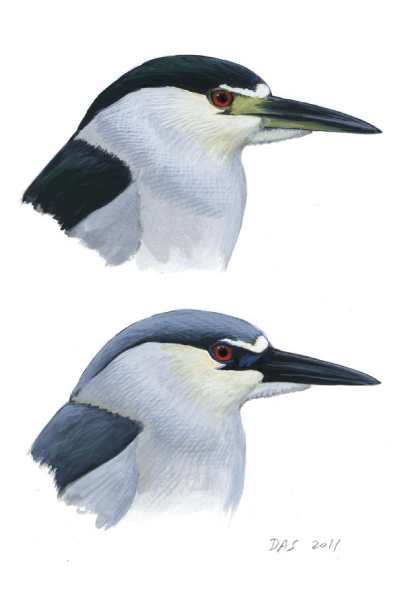 Si usted o alguien que conoce está interesado en ver una garza nocturna localmente, debe comenzar por revisar las marismas, lagos y ríos cercanos. Lo mejor sería comenzar su búsqueda al anochecer, cuando las garzas nocturnas deberían estar más activas. Si bien es la garza más común en todo el mundo, los científicos han expresado una preocupación de conservación de baja a moderada por la especie, debido al hecho de que las poblaciones han disminuido ligeramente en los últimos años. El Plan de Conservación de Aves Acuáticas de América del Norte ha expresado sus preocupaciones en una escala numérica con una calificación de gravedad de 13 de 20. Entonces, si bien no están en peligro inmediato de convertirse en una especie en peligro de extinción, la preservación del hábitat es tan importante como siempre para asegurar que estas espectaculares criaturas tengan un hogar en el futuro.
Si usted o alguien que conoce está interesado en ver una garza nocturna localmente, debe comenzar por revisar las marismas, lagos y ríos cercanos. Lo mejor sería comenzar su búsqueda al anochecer, cuando las garzas nocturnas deberían estar más activas. Si bien es la garza más común en todo el mundo, los científicos han expresado una preocupación de conservación de baja a moderada por la especie, debido al hecho de que las poblaciones han disminuido ligeramente en los últimos años. El Plan de Conservación de Aves Acuáticas de América del Norte ha expresado sus preocupaciones en una escala numérica con una calificación de gravedad de 13 de 20. Entonces, si bien no están en peligro inmediato de convertirse en una especie en peligro de extinción, la preservación del hábitat es tan importante como siempre para asegurar que estas espectaculares criaturas tengan un hogar en el futuro.
En conclusión, recuerde estar siempre atento a las garzas nocturnas mientras explora el terreno montañoso de Colorado. Si bien pueden clasificarse como aves costeras, las garzas nocturnas disfrutan pasar tiempo en las montañas tanto como tú y yo.
Recursos:
National Audubon Society- https://www.audubon.org/field-guide/bird/black-crowned-night-heron
The Cornell Lab: All About Birds- https://www.allaboutbirds.org/guide/Black -crowned_Night-Heron / life history # conservación
Términos de búsqueda: Night Heron, Montañas Rocosas, Aves costeras, Colorado
Escrito por Nate Grauel, un naturalista de Walking Mountains que disfruta más buscando garzas nocturnas mientras rema en las distintas bahías. que su estado natal de Maryland tiene para ofrecer.
 When people are asked to imagine the wildlife that calls the Rocky Mountains home, coastal birds are rarely the first thing that comes to one’s mind. So, it’s no surprise that some may be shocked to learn that herons, gulls, egrets, and many other coastal birds will breed within Colorado’s mountains.
When people are asked to imagine the wildlife that calls the Rocky Mountains home, coastal birds are rarely the first thing that comes to one’s mind. So, it’s no surprise that some may be shocked to learn that herons, gulls, egrets, and many other coastal birds will breed within Colorado’s mountains.
The presence of these coastal birds may go unnoticed at times. However, they play a vital role in Colorado's aquatic food web, while also acting as a critical litmus test of water quality. So, if you are traversing Colorado’s beautiful landscape and happen to come across any coastal birds, remember, the fact that you are witnessing these birds means only positive interactions for the surrounding bodies of water.
Most people recall the much larger Great Blue Heron when asked about the heron family. However, the Black Crowned Night Heron is the most common heron worldwide. The night heron is shorter and chunky in comparison to the Great Blue Heron, this is often over emphasized due to the fact they frequently rest with their necks pulled inward. They have earned their name “black crowned night heron” from the dark coloring on the crown of their head as well as their plumage.

Also true to their name, Black Crown Night Herons do the majority of their feeding around dusk and continue through the night. Like most other herons, night herons stalk their prey while wading in shallow waters. While they primarily chose to feed on fish, night herons will also eat earthworms, insects, shellfish, rodents, and reptiles such as lizards and snakes.
Night herons generally stalk alone or in very small groups. However, they are actually very social birds. Night herons are colony nesters and can often be spotted nesting within groups of other herons such as the great blue heron, green heron, and little blue heron, and more. The male night heron will choose the nesting location, often selecting a spot within trees, patches of cattails, or any area that might offer protection from predators. These nests are usually built with twigs and woody vegetation that the male gathers and gives to the female who is then in charge of the actual formation of the nest. Later, once the nest is formed night herons will normally lay 3-5 eggs that the male and female will take turns protecting.
 If you or someone you know is interested in seeing a night heron locally, you should start by checking nearby marshlands, lakes, and rivers. It would be best to start your search around dusk when night herons should be most active. While they are the most common heron worldwide, scientists have expressed low to moderate conservation concern for the species, due to the fact that populations have been slightly declining in recent years. The North American Waterbird Conservation Plan has expressed their concerns on a numerical scale giving with a 13 out of 20 severity rating. So, while they aren’t in immediate danger of becoming an endangered species, habitat preservation is just as important as ever in assuring these spectacular creatures have a home in the future.
If you or someone you know is interested in seeing a night heron locally, you should start by checking nearby marshlands, lakes, and rivers. It would be best to start your search around dusk when night herons should be most active. While they are the most common heron worldwide, scientists have expressed low to moderate conservation concern for the species, due to the fact that populations have been slightly declining in recent years. The North American Waterbird Conservation Plan has expressed their concerns on a numerical scale giving with a 13 out of 20 severity rating. So, while they aren’t in immediate danger of becoming an endangered species, habitat preservation is just as important as ever in assuring these spectacular creatures have a home in the future.
In conclusion, remember to always be on the lookout for night herons while exploring Colorado’s mountainous terrain. While they might be classified as shore birds, night herons enjoy spending time in the mountains just as much as you and I.
Resources:
National Audubon Society- https://www.audubon.org/field-guide/bird/black-crowned-night-heron
The Cornell Lab: All About Birds- https://www.allaboutbirds.org/guide/Black-crowned_Night-Heron/lifehistory#conservation
Searchable terms: Night Heron, Rocky Mountains, Coastal birds, Colorado
Written by Nate Grauel, a naturalist at Walking Mountains that enjoys searching for night herons most while paddling the various bays that his home state of Maryland has to offer.

Escrito por Maria Burciaga-Alaniz, ¡previamente la coordinadora de EVOM, ahora la coordinadora...
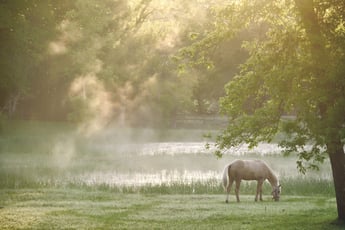
¡Qué mejor manera para comenzar el invierno y la época navideña con una sección de fotografía...